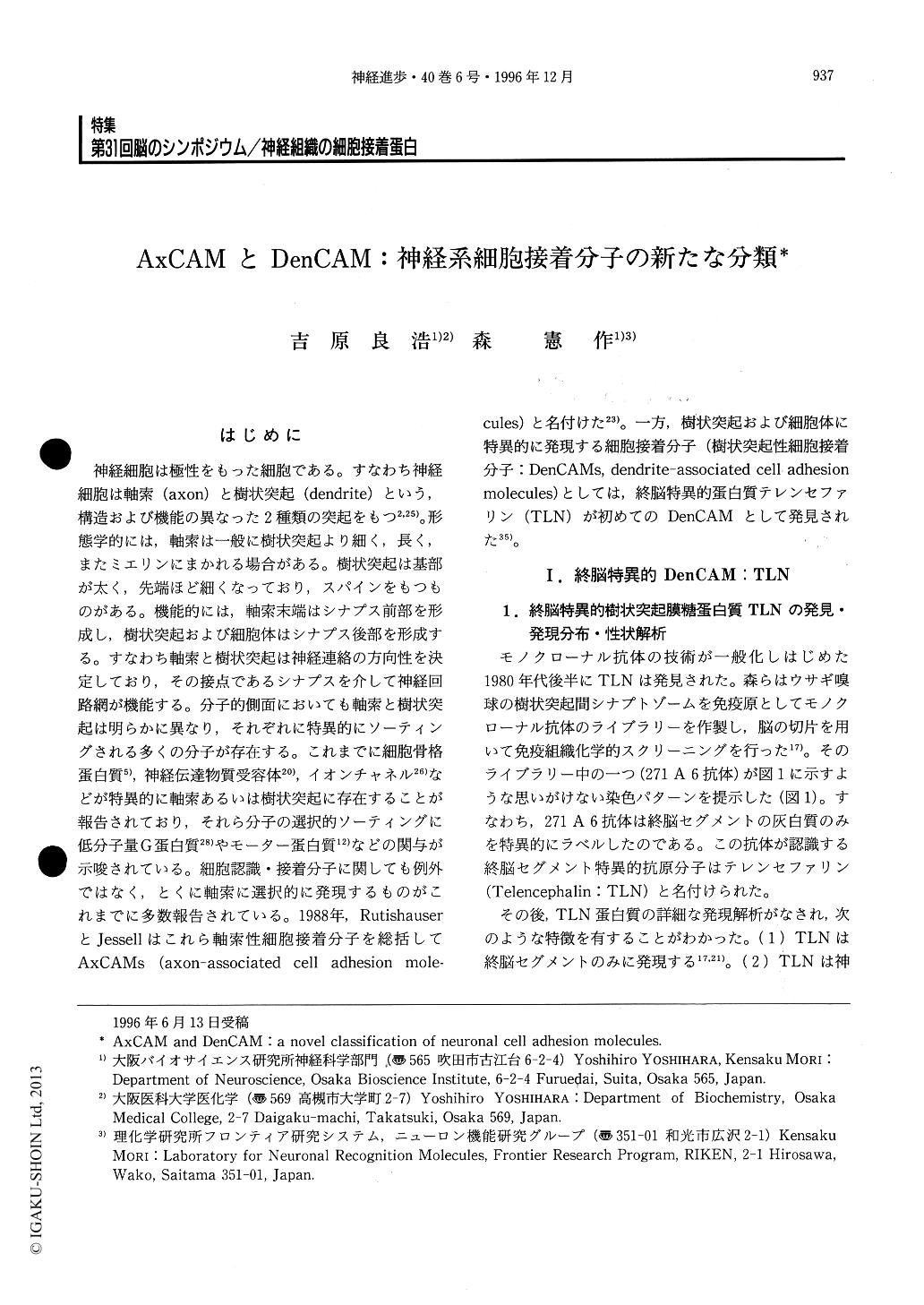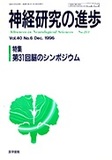Japanese
English
- 有料閲覧
- Abstract 文献概要
- 1ページ目 Look Inside
はじめに
神経細胞は極性をもった細胞である。すなわち神経細胞は軸索(axon)と樹状突起(dendrite)という,構造および機能の異なった2種類の突起をもつ2,25)。形態学的には,軸索は一般に樹状突起より細く,長く,またミエリンにまかれる場合がある。樹状突起は基部が太く,先端ほど細くなっており,スパインをもつものがある。機能的には,軸索末端はシナプス前部を形成し,樹状突起および細胞体はシナプス後部を形成する。すなわち軸索と樹状突起は神経連絡の方向性を決定しており,その接点であるシナプスを介して神経回路網が機能する。分子的側面においても軸索と樹状突起は明らかに異なり,それぞれに特異的にソーティングされる多くの分子が存在する。これまでに細胞骨格蛋白質5),神経伝達物質受容体20),イオンチャネル26)などが特異的に軸索あるいは樹状突起に存在することが報告されており,それら分子の選択的ソーティングに低分子量G蛋白質28)やモーター蛋白質12)などの関与が示唆されている。細胞認識・接着分子に関しても例外ではなく,とくに軸索に選択的に発現するものがこれまでに多数報告されている。1988年,RutishauserとJessellはこれら軸索性細胞接着分子を総括してAxCAMs(axon-associated cell adhesion molecules)と名付けた23)。
Neurons are polarized into two compartments : axons and dendrites. Specific sorting machinery conveys many proteins to either axonal or somadendritic membranes. A number of axon-associated cell adhesion molecules (AxCAMs) of the immunoglobulin superfamily have been identified and they are classified into several subgroups (TAG-1, L1, DCC, OB -CAM, and SC1 subgroups) on the basis ofdomain structures. The four members of the TAG-1 subgroup (BIG-1, BIG-2, TAG-1, and F3) show overlapping and differential expression patterns in the developing and adult brain.

Copyright © 1996, Igaku-Shoin Ltd. All rights reserved.


